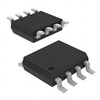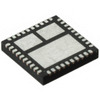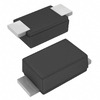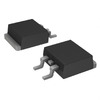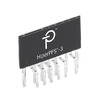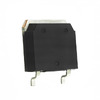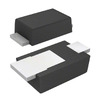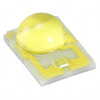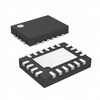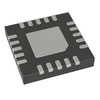LMR400 vs RG8 Coaxial Cable Comparison Guide
This article explores the features, uses, and comparisons of LMR400 and RG8 coaxial cables, helping you understand which cable might be the best fit for your needs. You'll find clear information on each cable’s characteristics, applications, and performance differences to make choosing the right one easier.Catalog
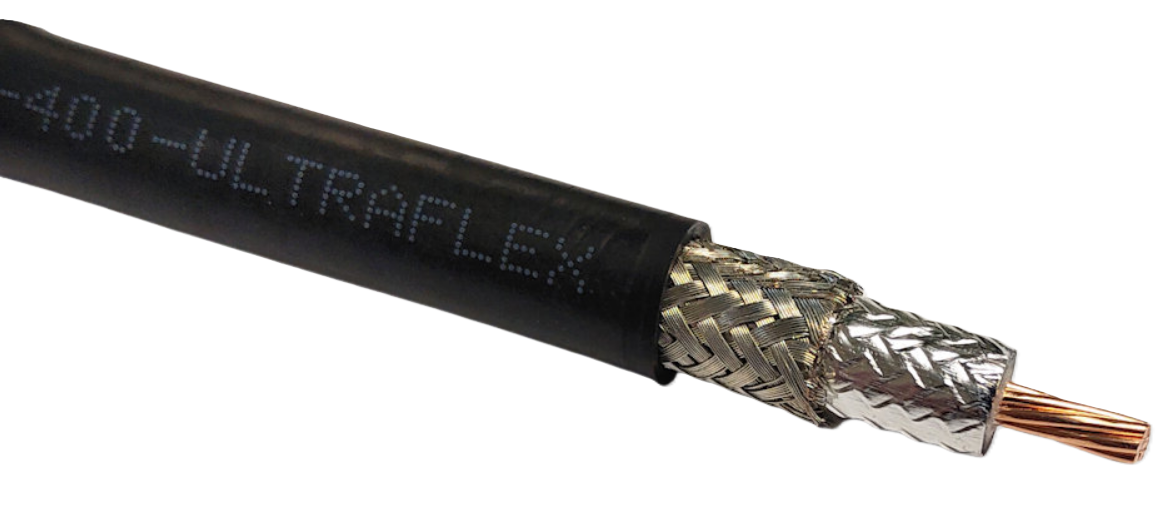
Introduction to LMR400 Coaxial Cable
Times Microwave's LMR®-400 coaxial cable brings together flexibility, low signal loss, and durable RF shielding, designed for reliable performance. Its narrow bend radius makes it easy to maneuver, especially in areas where space is tight. This cable minimizes signal loss more effectively than other cables of similar size, offering about 90 dB of RF shielding, which reduces interference in environments where electromagnetic signals might cause issues. Suitable for both indoor and outdoor applications, the LMR-400 cable fits into a variety of setups requiring a low-loss, flexible RF cable, including WLL, GPS, LMR, WLAN, WISP, WiMax, SCADA, and mobile antennas. It also serves as a replacement for the RG-8 cable, making it a versatile choice across multiple applications.
Note: LMR® is a registered trademark of Times Microwave Systems.
Overview of RG8 Coaxial Cable
Pasternack’s RG8 coaxial cable is designed to be flexible and reliable. This 50-ohm cable features a polyethylene (PE) dielectric and a PVC jacket with a thickness of 0.405 inches. It operates efficiently up to frequencies of 1 GHz, providing an attenuation of 8 dB at this level and a maximum power rating of 190 watts. With its durable build, the RG8 cable can handle various RF and microwave needs, making it a practical option for transmitting radio signals or other RF applications. Pasternack offers this cable as part of a broad range of RF, microwave, and millimeter-wave components, with options for same-day shipping. Custom cable assemblies can also be built and shipped quickly, allowing users to get tailored solutions with speed and ease.
Key Features Comparison: RG8 vs LMR400
Main Characteristics of LMR400
• Pricing
Priced per foot, LMR400 gives flexibility to purchase only what you need for your setup, minimizing waste and cost.
• Cable Type
LMR400 is designed as a low-loss, flexible coaxial cable, making it suitable for both indoor and outdoor applications.
• Impedance
With a 50-ohm impedance, LMR400 ensures stable signal flow, fitting the requirements of most RF applications.
• Center Conductor
The center conductor is made of Bare Copper Covered Aluminum (BCCAI), giving a balance between performance and durability.
• Jacket Material
Made of Polyethylene (PE), the jacket protects the cable from environmental elements, making it suitable for various conditions.
• Outer Diameter
The cable has an outer diameter of .405 inches, which makes it compatible with many standard connectors.
• Indoor/Outdoor Use
LMR400 is designed for both indoor and outdoor use, allowing it to handle different installation needs without performance loss.
• RG-8 Replacement
It serves as a drop-in replacement for RG-8 cables, offering better flexibility and lower signal loss in the same applications.
• Attenuation at Different Frequencies
At 900 MHz, attenuation is 3.9 dB per 100 feet, and at 2.4 GHz, it is 6.65 dB per 100 feet, ensuring low signal loss.
• Applications
Ideal for WLL, GPS, LMR, WLAN, WISP, WiMax, SCADA, and mobile antennas, LMR400 suits a wide range of wireless systems.
• Maximum Length
Available in continuous lengths up to 1000 feet, LMR400 can handle extended runs without needing additional connectors.
Main Characteristics of RG8
• Conductor Material
RG8 features a bare copper conductor, known for its ability to provide reliable signal transmission.
• Insulation
Solid low-density polyethylene is used for insulation, adding durability to the cable while maintaining flexibility.
• Shielding
The cable has a bare copper shield, which reduces external interference, keeping your signal stable.
• Jacket Material
The jacket is made of contaminating PVC, Type 1 per MIL-C-17, offering basic protection, but not ideal for harsh outdoor environments.
• Jacket Color
The black jacket provides a simple, neutral appearance suitable for most installations.
• Center Conductor Size
The 12 AWG stranded copper center conductor is durable and capable of handling higher power levels.
• Shielding Quality
With 95% bare copper braid shielding, it provides decent interference protection for audio and radio frequency applications.
• Impedance
RG8 is a 50-ohm cable, making it compatible with standard RF applications and most commercial radio equipment.
• Certification
UL Listed, this cable meets safety standards, giving confidence in installations that require regulatory compliance.
• Availability
Sold per foot, you can purchase RG8 in the exact length needed for your project.
• Maximum Length
RG8 is available in lengths up to 1000 feet, making it suitable for installations that require longer cable runs.
Applications: RG8 vs LMR400
Use Cases of LMR400
• Wireless Communication Systems
LMR400 is commonly used in wireless communication systems for transmitting data over long distances without signal degradation.
• RG8/9913 Replacement
Designed as a drop-in replacement for RG8/9913 air-dielectric cables, LMR400 offers similar form factor but with enhanced performance.
• Short Antenna Connections
This cable is ideal for connecting to short antennas, helping to maintain signal strength over short to medium runs.
• Feeder Runs
It’s often used as a feeder cable, which is the line that carries the signal to and from the antenna in communication systems.
• Low-Loss Routing
LMR400 is easy to route in confined spaces, making it an excellent choice for installations where flexible but low-loss cable is required.
Use Cases of RG8
• Radio Transmission
RG8 is suitable for carrying radio transmission signals, widely used in commercial and amateur radio setups.
• Audio Control Rooms
In audio control rooms, RG8 is often chosen for its shielding capabilities, helping to prevent unwanted interference in audio signals.
• Radio Stations
Used in radio stations, RG8 handles the high-frequency transmission required for broadcasting.
• External Antenna Connections
RG8 is commonly used for connecting external radio antennas, providing a reliable link between the radio and antenna systems.
Comparison of Attenuation vs Frequency: LMR400 and RG8
LMR400 Attenuation vs Frequency
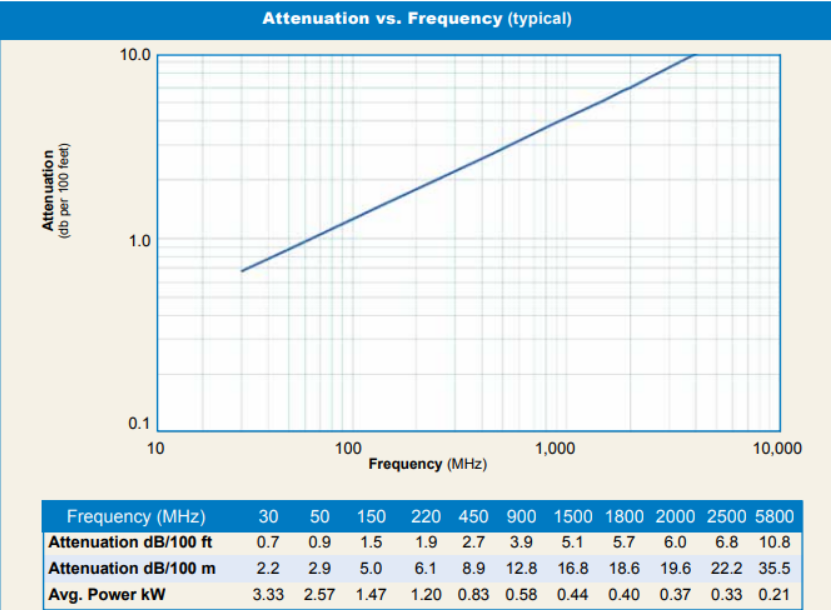
RG8 Attenuation vs Frequency

Specifications for LMR400 vs RG8
| Parameter | LMR-400 | RG8 |
| Flex Type | Flexible | Flexible |
| Impedance | 50 Ohm | 50 Ohm |
| Dielectric Type | PE (F) | PE |
| Velocity of Propagation | 85% | 66% |
| Jacket Diameter | 0.405 in | 0.405 in |
| Jacket Material | PE | PVC (NC) |
| No. of Shields | 2 | 1 |
| Attenuation at 1 GHz | 4.25 dB | 8 dB |
| Frequency, Max | 6 GHz | 1 GHz |
| Max Operating Temperature | 85°C | 80°C |
| Center Conductor Type | Solid | Stranded |
| Inner Conductor, Number of Strands | 1 | 7 |
| Coax Type | Coax | Coax |
LMR400 and RG8 Comparison
When comparing LMR400 and RG8 cables, both have a 50-ohm impedance, but they differ significantly in performance attributes such as attenuation and frequency range. The LMR400 cable stands out with a lower attenuation rate—4.25 dB at 1 GHz compared to RG8’s 8 dB—which means it loses less signal strength over distance. Additionally, LMR400 can operate at frequencies up to 6 GHz, whereas RG8 is limited to 1 GHz. Temperature-wise, LMR400 can handle up to 85°C, while RG8 can operate up to 80°C. Designed to replace lower-quality RG-8 cables, LMR400 offers increased flexibility, simpler installation, and minimal signal loss, making it an optimal choice for setups where maintaining signal quality over distance is essential.
LMR400 Manufacturer Information
Times Microwave Systems is a well-established provider of coaxial transmission lines, serving various industries, including military, aerospace, wireless communications, and industrial applications. They offer a broad range of RF and microwave transmission solutions designed to meet both high-performance requirements and commercial volume needs. With production facilities in the United States and China, Times Microwave Systems can cater to applications ranging from a few kHz up to 110 GHz. Since 2009, Times Microwave has been a part of Amphenol Corporation, one of the largest interconnect component manufacturers worldwide. This connection has further enabled them to offer advanced solutions in electrical, electronic, and fiber-optic connectors, as well as specialized coaxial and other cabling solutions.
About us
ALLELCO LIMITED
Read more
Quick inquiry
Please send an inquiry, we will respond immediately.
Frequently Asked Questions [FAQ]
1. Is LMR-400 the same as RG-58?
LMR-400 and RG-58 are different types of coaxial cables. LMR-400 has lower signal loss and is thicker and less flexible than RG-58, making it more suitable for applications that need a stable signal over longer distances. RG-58, on the other hand, is lighter and more flexible, but it may not provide the same level of performance for high-frequency applications.
2. What is LMR-400 cable typically used for?
LMR-400 is often used as a replacement for RG8/9913 air-dielectric cables. It’s ideal for applications requiring low signal loss and is commonly used in wireless communication systems, antenna connections, and feeder lines, where keeping the signal clear and strong is a priority.
3. Are there cables better than LMR-400?
There are other cables that may suit specific needs, such as RG-8, RG 213, and RG 214, but these generally have higher signal loss than LMR-400. LMR-400 is a popular choice because it combines durability, lower signal loss, and a flexible design, making it versatile for many applications.
4. What are typical uses for RG8 cable?
RG8 is often used to transmit radio signals and is commonly found in audio control rooms, radio stations, and as connections for external radio antennas. Its construction makes it effective for carrying signals without much interference, which is helpful in environments where clear signal transmission is necessary.
5. How does RG8 compare to RG-58?
RG8 is thicker and can carry stronger signals than RG-58. It has a 12 AWG wire gauge, which supports better signal quality over longer distances, making it more suitable for amateur radio or applications requiring stable transmission. RG8X, a variation, is thinner (16 AWG) but still provides similar signal performance.

How to Use the 74LS86 IC in Digital Circuits?
on November 10th
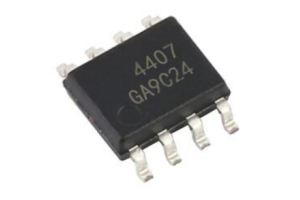
Everything You Need to Know About the AO4407A MOSFET
on November 10th
Popular Posts
-

What is GND in the circuit?
on January 1th 3139
-

RJ-45 Connector Guide: RJ-45 Connector Color Codes, Wiring Schemes, R-J45 Applications, RJ-45 Datasheets
on January 1th 2681
-

Understanding Power Supply Voltages in Electronics VCC, VDD, VEE, VSS, and GND
on November 15th 2246
-

Fiber Connector Types: SC Vs LC And LC Vs MTP
on January 1th 2191
-

Comparison Between DB9 and RS232
on January 1th 1805
-

What Is An LR44 Battery?
Electricity, that ubiquitous force, quietly permeates every aspect of our daily lives, from trivial gadgets to life-threatening medical equipment, it plays a silent role. However, truly grasping this energy, especially how to store and efficiently output it, is no easy task. It is against this background that this article will focus on a type of coin cell battery that may seem insignificant on the...on January 1th 1781
-

Understanding the Fundamentals:Inductance Resistance, andCapacitance
In the intricate dance of electrical engineering, a trio of fundamental elements takes center stage: inductance, resistance, and capacitance. Each bears unique traits that dictate the dynamic rhythms of electronic circuits. Here, we embark on a journey to decipher the complexities of these components, to uncover their distinct roles and practical uses within the vast electrical orchestra. Inductan...on January 1th 1733
-

What Is RF and Why Do We Use It?
Radio Frequency (RF) technology is a key part of modern wireless communication, enabling data transmission over long distances without physical connections. This article delves into the basics of RF, explaining how electromagnetic radiation (EMR) makes RF communication possible. We will explore the principles of EMR, the creation and control of RF signals, and their wide-ranging uses. The article ...on January 1th 1686
-

CR2430 Battery Comprehensive Guide: Specifications, Applications and Comparison to CR2032 Batteries
What is CR2430 battery ?Benefits of CR2430 BatteriesNormCR2430 Battery ApplicationsCR2430 EquivalentCR2430 VS CR2032Battery CR2430 SizeWhat to look for when buying the CR2430 and equivalentsData Sheet PDFFrequently Asked Questions Batteries are the heart of small electronic devices. Among the many types available, coin cells play a crucial role, commonly found in calculators, remote controls, and ...on January 1th 1685
-

Comprehensive guide to hFE in transistors
Transistors are crucial components in modern electronic devices, enabling signal amplification and control. This article delves into the knowledge surrounding hFE, including how to select a transistor's hFE value, how to find hFE, and the gain of different types of transistors. Through our exploration of hFE, we gain a deeper understanding of how transistors work and their role in electronic circu...on November 15th 1643
